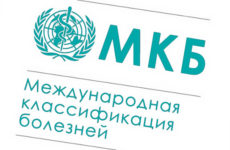Warts can appear on any part of the skin, as well as on the mucous membranes, both in adults and in children. This is an infectious disease caused by the human papillomavirus (HPV), which lives and multiplies on the upper layer of the epidermis.
It is able to penetrate through damage to the skin (microcracks, punctures, cuts). Often, people do not pay due attention to the detected neoplasms, since they do not cause any discomfort, however, doctors recommend getting rid of them. Warts can bring a lot of problems to a person, up to cancer.
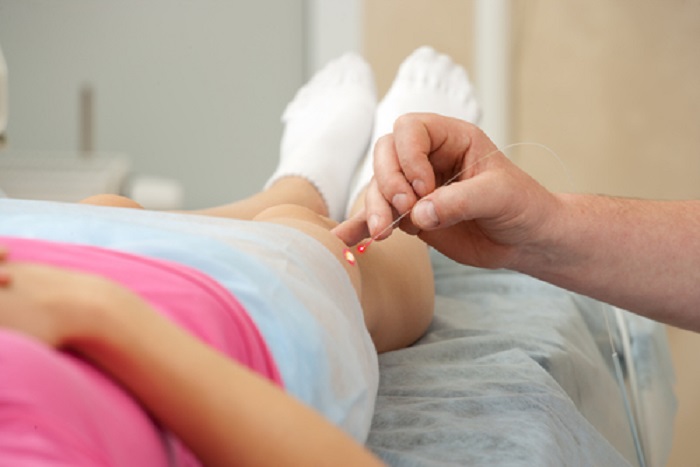
Currently, in medicine, there are several ways to get rid of skin growths. One of them is laser wart removal.
Содержание:
- 1 What formations can be removed by this method?
- 2 On what parts of the body is it acceptable?
- 3 Indications and contraindications for this method of treatment
- 4 How is the removal and healing after the procedure?
- 5 Possible consequences and complications
- 6 Advantages and disadvantages of the method
- 7 Cost of the procedure
What formations can be removed by this method?
Laser therapy is used to remove any warts. They are of the following types:
- Ordinary . These are dense neoplasms that can be of different sizes. Most often they match the color of the skin, but in some cases they have a darker shade. Often, black blotches are visible inside these warts.
- flat . Such warts have a shiny surface and a pinkish or light brown color. In most cases, they appear in children and adolescents.
- Plantar . These neoplasms are similar to corns. They are usually yellow in color and have a rough surface. Their main feature is that they occur on the foot and grow inward, causing pain to their owner when walking.
- Pointed . In another way they are called “warts”. These are small warts that tend to grow rapidly. Condylomas appear on the mucous membranes, so they can be found on the genitals or in the oral cavity.
- Filamentous (acrochords) . They have an oblong shape, in length they can grow to impressive sizes (about 10 mm). Usually affects the face, neck and armpits.
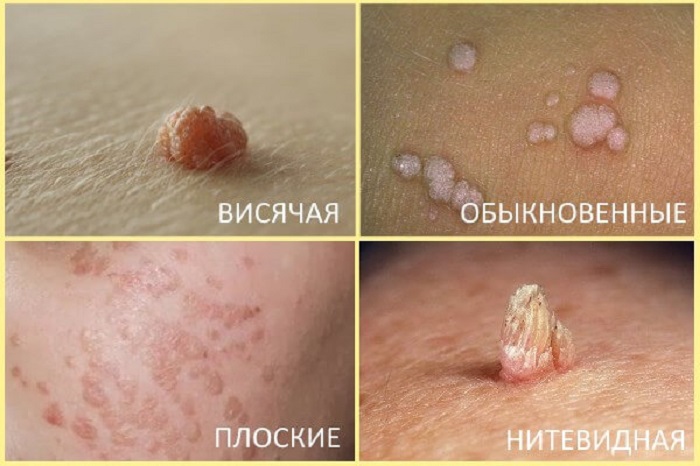
On what parts of the body is it acceptable?
The localization of warts does not affect the possibility of removing them with a laser. The use of laser therapy is allowed on any part of the body.
Indications and contraindications for this method of treatment
Before you start treating a wart with a laser method, you must be examined by a doctor and take blood and urine tests to make sure that there are no contraindications for the procedure.
Based on the results of the tests, the doctor will also determine what type of anesthesia and pain medication should be used during laser therapy.
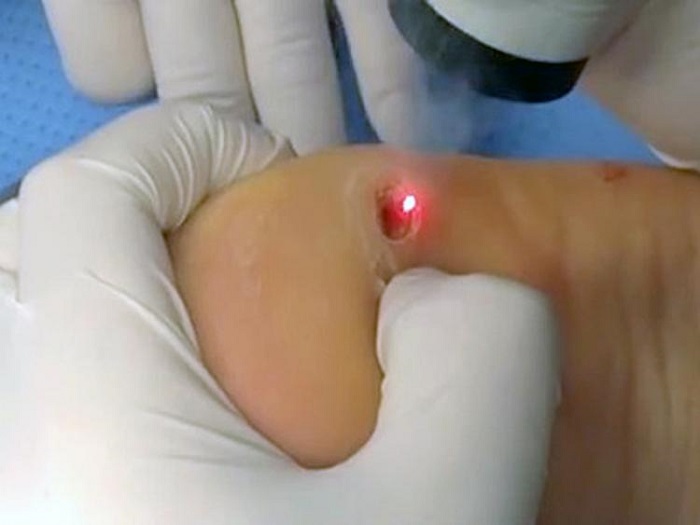
When is application allowed?
Laser therapy is indicated in the following cases:
- when pressing on the growth, pus or blood is released;
- warts affect a significant number of skin areas;
- there is swelling at the site of the localization of the neoplasm;
- growths are large.
Who is not suitable for burning?
There are a number of factors in the presence of which laser wart removal is not allowed. These include:
- herpes;
- infectious diseases;
- SARS, colds, flu;
- pregnancy at all stages;
- skin irritation in areas near growths;
- oncology of any kind;
- high blood pressure;
- diabetes;
- psychical deviations;
- thyroid disease;
- liver or kidney failure.
How is the removal and healing after the procedure?
The procedure is performed in the doctor’s office under sterile conditions. The specialist uses a high-tech surgical laser device, the beam of which will burn out the neoplasm. Under the influence of high temperature, the viruses that caused the appearance of the wart die.
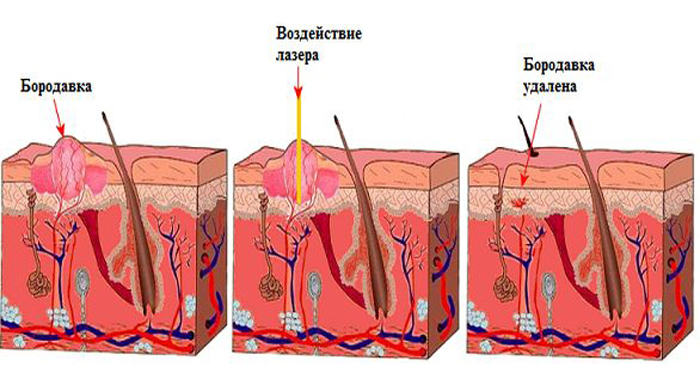
The main stages of the operation
The patient is positioned on the couch in such a way that the doctor has convenient access to the affected area of the body. An anesthetic is injected on both sides of the wart to help reduce pain. The drug begins to act after 10 minutes.
Further, there is a process of evaporation of the wart, or rather, its root. When the beam is exposed to the growth, there is no direct contact of the laser with the skin, which eliminates tissue injury and bleeding. Infection in the wound under such conditions is impossible.
The duration of the laser therapy procedure is 20-30 minutes. After that, the area where the wart was, is treated with disinfectants and a bandage is applied.
This operation does not involve hospitalization of the patient, so immediately after it you can go home. Skin treatment and subsequent dressings are done independently.
Does burning hurt?
Laser wart removal is considered a painless procedure. However, in some cases, there may still be slight pain on the nearby skin. It is short-term, so should not cause concern.
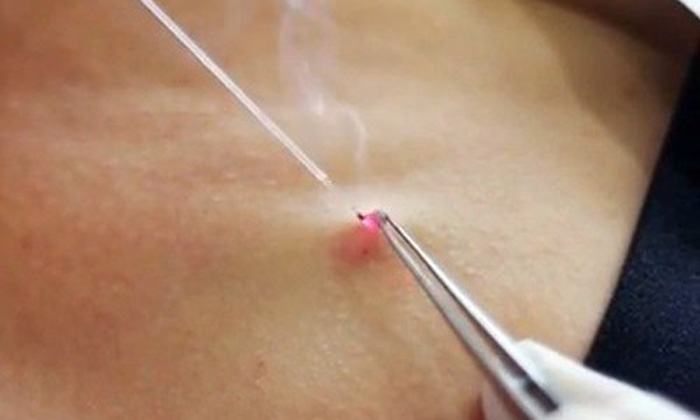
Care after the procedure
A dark brown crust forms at the site of the removed wart, under which the healing process takes place. It is protective, so it should never be torn off. After a while, it will fall off by itself, without causing any pain.
After that, the skin begins to recover. With proper wound care, the likelihood of scarring is minimized.
It will take 1-2 weeks for the wound to heal completely after the operation. In immunocompromised people, this process takes about a month.
In the first days after the operation, it is necessary to periodically treat the damaged skin with antiseptic agents that speed up the healing process. To do this, you can use brilliant green, iodine, fukortsin.
Then it will be enough to lubricate the site of removal of the build-up with anti-inflammatory drugs, for example, solcoseryl or methyluracil. In addition, the patient must comply with the following care rules:
- do not expose the place of removal to mechanical damage (blows, cuts);
- do not use cosmetics;
- exclude ultraviolet rays from entering the wound (do not sunbathe in the sun, do not visit the solarium);
- do not swim in pools and open water.
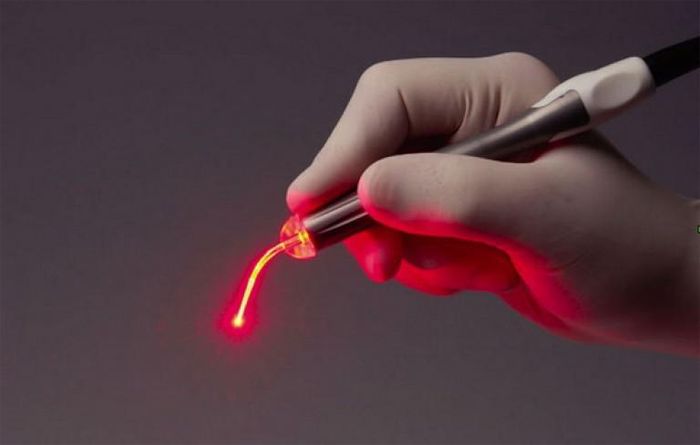
Possible consequences and complications
Complications may arise due to insufficient qualifications of the attending physician. That is why you need to choose an experienced specialist who knows all the subtleties regarding laser therapy.
Violation of the rules of wound care also entails unpleasant, and sometimes dangerous, consequences. It is possible that an infection will enter the body through the injured areas of the skin where the warts were removed.
In this case, re-infection will occur, which will lead to the formation of new growths. In some cases, malignant tumors may develop.
Advantages and disadvantages of the method
Like any method of medical intervention, laser therapy has its advantages and disadvantages. The advantages of the procedure include:
- high efficiency;
- relative painlessness;
- exclusion of bleeding in the process;
- in most cases, there are no aesthetic defects;
- ensuring complete sterility due to non-contact nature;
- the session does not take much time;
- recurrence is unlikely.
The disadvantage of this method of removing warts is the impossibility of carrying out the procedure at home. Many people cannot afford to have surgery in a good clinic due to its relatively high cost.
Cost of the procedure
In different cities, prices for laser therapy vary from 300 to 3 thousand rubles for the removal of one wart. It all depends on the type of growth, its location on the body, size and nature.
In addition to eliminating growths, it is important to prevent their reappearance. To do this, you need to lead a healthy lifestyle and strengthen the immune system. For each person, it is mandatory to observe simple rules of hygiene:
- do not wear someone else’s clothes and shoes;
- use only your own towel;
- prevent sweating of the hands and feet;
- wash hands with soap after walking, visiting public places.
If neoplasms are found on the body, you should not self-medicate, but immediately consult a doctor.



